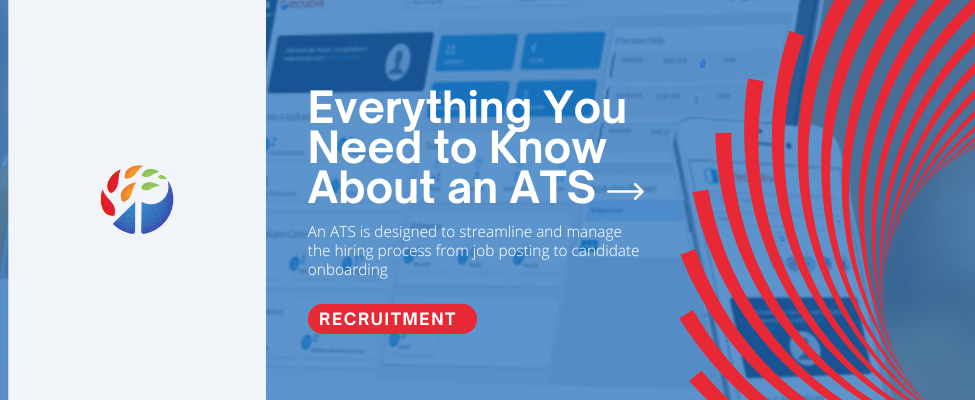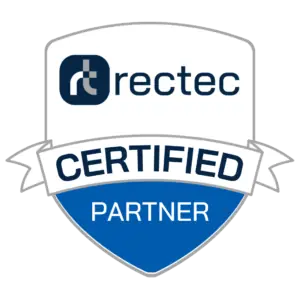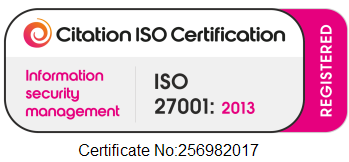Everything You Need to Know About an ATS
An Applicant Tracking System (ATS) is a cornerstone technology in modern recruitment processes. Essentially, it’s a software application designed to streamline and manage the hiring process from job posting to candidate onboarding. According to a survey conducted by Jobscan, nearly 98% of Fortune 500 companies use ATS for their recruitment needs!
How ATS Works
ATS operates through a sophisticated process of parsing CVs, storing candidate data, and facilitating the screening and selection of applicants. When a candidate submits their CV, the software scans and parses it to extract relevant information such as work experience, skills, and education.
This parsing process is crucial as it enables you to efficiently search and filter through a vast pool of applicants. Research by HR Technologist reveals that ATS can reduce the time spent on CV screening by up to 75%, demonstrating its efficiency in handling large volumes of applications.
Key Features of ATS
- CV Parsing: Applicant Tracking Software can automatically extracts information from CVs, such as contact details, work experience, and skills, making it easier for you to evaluate candidates.
- Keyword Search: You can search for specific keywords or phrases within CVs and cover letters to quickly identify suitable candidates.
- Customisable Workflows: ATS allows you to create customised recruitment workflows tailored to your specific hiring processes, ensuring consistency and efficiency.
Benefits of Using ATS
The adoption of such technology yields numerous benefits for your teams, ranging from increased efficiency to improved candidate experience. One significant advantage is time-saving. By automating manual tasks such as CV screening and candidate communication, ATS frees up valuable time for your recruiters to focus on strategic activities like candidate engagement and relationship building.
According to research by Betterteam, companies using ATS experience a 40% reduction in time-to-fill vacancies compared to those relying on manual processes, resulting in significant cost savings.
Furthermore, this type of software enhances the candidate experience by providing timely updates on application status and facilitating seamless communication throughout the hiring process. In fact, a survey by CareerBuilder found that 78% of candidates believe the overall candidate experience they receive reflects how a company values its people, highlighting the importance of a positive recruitment experience.
Common ATS Mistakes to Avoid
Despite its numerous benefits, the effectiveness of ATS can be compromised if not used correctly. One common mistake is ignoring customisation options. Many ATS platforms offer extensive customisation features that allow you to tailor the system to your unique recruitment processes and requirements. However, failing to utilise these customisation options can lead to missed opportunities.
Another pitfall to avoid is over-reliance on automation. While automation can streamline certain aspects of the recruitment process, it’s essential to strike a balance between automation and human intervention. Over-automating the process can result in a lack of personalisation and human touch, which may deter top candidates.
Research by RecruitingDaily reveals that 82% of candidates believe that technology can never replace the human aspect of the recruitment process, emphasising the importance of maintaining a human touch.
Choosing the Right ATS
Selecting the right ATS is a critical decision that can significantly impact recruitment outcomes. It involves assessing the company’s unique needs, researching available options, and evaluating the functionality and compatibility of different systems. One essential factor to consider is scalability. As your company grows and evolves, your recruitment needs may change, so it’s crucial to choose an ATS that can scale with your organisation.
Another factor to consider is integration capabilities. ATS integration with other HR systems such as payroll and performance management software is essential for streamlining data exchange and ensuring a seamless experience for both your recruiters and employees.
ATS Best Practices
To maximise the benefits of ATS, it’s essential to adhere to best practices that optimise its use and effectiveness. One such practice is keeping the ATS updated with the latest features and enhancements. Regular updates ensure that the system remains current and aligned with evolving recruitment trends and best practices. Additionally, updating the ATS helps address any security vulnerabilities and ensures compliance with data protection regulations.
Another best practice is providing comprehensive training to your recruiters and hiring managers. Effective training ensures that users understand how to leverage the full capabilities of the ATS and maximise its potential. Training should cover key functionalities such as CV parsing, keyword search, and workflow customisation, empowering your team to make the most of the system’s features.
Monitoring metrics is also crucial for evaluating the effectiveness of ATS and identifying areas for improvement. Key metrics to track include time-to-fill, applicant satisfaction, and recruiter productivity. By analysing these metrics regularly, you can identify bottlenecks in the recruitment process, refine your strategies, and drive continuous improvement.
ATS Trends for the Future
As technology continues to evolve, ATS is poised to undergo significant advancements to meet the changing needs of recruiters and candidates alike. One emerging trend is the integration of artificial intelligence (AI) and machine learning capabilities into ATS platforms. AI-powered ATS can analyse CVs, identify patterns, and make recommendations based on candidate data, streamlining the screening process and improving the quality of hires.
Another trend is the focus on enhancing candidate engagement features within ATS platforms. Advanced ATS platforms offer features such as chatbots, personalised messaging, and mobile-friendly interfaces to engage candidates throughout the hiring process and differentiate the employer brand.
Mobile optimisation is also a key trend shaping the future of ATS. With mobile devices becoming the primary means of accessing the internet, ATS platforms are increasingly prioritising mobile-friendly designs and functionalities. Mobile optimisation enables candidates to apply for jobs, receive updates, and communicate with recruiters on the go, enhancing convenience and accessibility.




Comments are closed